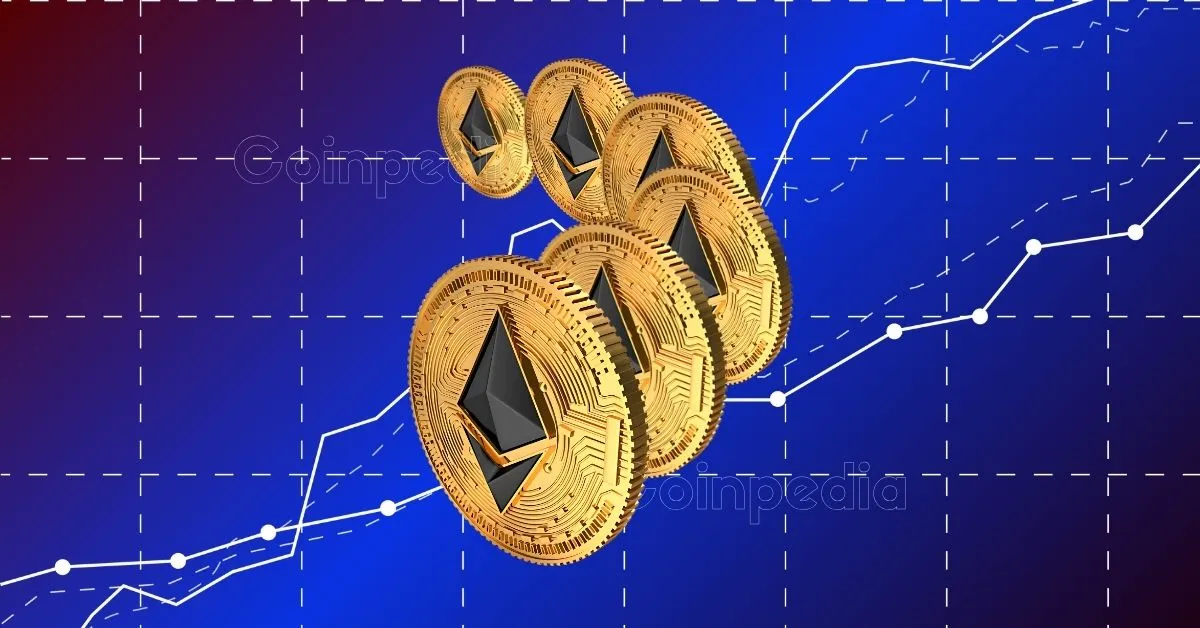Cryptocurrencies are extremely volatile by nature and design. The cryptocurrency market is extremely speculative and lacks a regulatory framework for trading. This renders cryptocurrency trading more volatile than bonds and equities. Ethereum is the second most prominent cryptocurrency after Bitcoin, and its value has steadily declined for an extended period. In August, Ethereum experienced a decline of approximately 12.25%, compared to a 9.66% decline in the past week. The current price of Ethereum is $1662, representing a loss of 1.05% over the past 24 hours. Even with the bearish trajectory, investors continue to HODL their Ethereum holdings. ETH bears are suppressing the Ethereum price, but traders and exchanges are attempting to increase transparency, which could improve investor sentiment. This has resulted in a 24.15% increase in Ethereum trading volume over the past 24 hours, to $4 billion.
The Bearish Trend
Decentralized applications or dApps are built on Ethereum and are developed for different purposes like social media, gaming, and finance. Ethereum provides a flexible platform for creating new decentralized applications and the infrastructure necessary for software developers to concentrate their efforts on creating more inventive use cases for dApps. This allows for rapidly deploying applications in industries such as gambling, banking, and e-commerce. The decentralized applications of Ethereum utilize smart contracts and are deployed on the ETH network using the blockchain network for data storage.
There has been a weakness in the crypto market due to uncertainty and the lack of large trading volumes. Ethereum has demonstrated greater volatility than its competitor, Bitcoin. Scalability issues plaguing the Ethereum network could be one of the causes for this. This also explains why several layer 2 challenges, including Polygon, have reported additional NFTs on their respective platforms. Additionally, there is intense competition in the crypto market. This has resulted in a bearish scenario for Ethereum, which appears less likely to end, barring the emergence of alternative positive catalysts. Ethereum’s bear case is correlated with broader market conditions and increased regulatory scrutiny.
Consequences for Investors
Ethereum has been a pioneer for a long time, captivating the imagination of enthusiasts and investors. However, the dominant digital asset has recently experienced a bearish rally that has caused traders concern. In the midst of constantly fluctuating crypto market sentiment, new competitors are emerging with the potential to revolutionize the world of digital currencies and crypto trading. Ethereum, which is not only a digital asset but also a platform for smart contracts and decentralized applications, possesses capabilities that extend far beyond those of a digital currency. The recent bearish rebound has affected Ethereum’s price, making it crucial to evaluate its strength. With the Ethereum 2.0 upgrade, investors can now benefit from enhanced energy efficiency and scalability, making the future of ETH more promising than ever.
Evolving Applications and Challenges
Even in a bearish crypto market where prices have fallen and many projects have failed, innovative blockchain-based systems are thriving. Overall, consumer adoption and technology innovation have increased. Blockchain-based systems should not debut in a bearish market since they can damage product security, client satisfaction, and milestones. Technologically advanced items can attract investors and partners. Blockchain-based platforms that take considerable time and effort to develop digital products can increase success rates in a bearish market by attracting a small pool of companies and investors or solidifying their pitch for an inevitable bullish market. The average investor loses less money during weak markets because scam ventures decrease. The crypto industry’s reputation and image improved during a bear market, encouraging more consumers to join Ethereum casinos and other blockchain-based platforms.
What Can Investors Do?
Ethereum investors can use different strategies to deal with a bearish trend, such as:
Portfolio Diversification: Portfolio diversification requires spreading the portfolio among different financial instruments, including stocks, digital assets, and bonds. How investors slice up their portfolios depends on their risk tolerance and trading goals. Every situation is different. An effective asset allocation strategy helps traders avoid the risks of putting all their eggs in one basket.
Risk Management: To survive a bear market, you must have a strong risk management strategy in place. To safeguard their cash and prevent losses, investors can specify entry and exit points as well as stop-loss orders. They can also avoid investing more than they can afford to lose since cryptocurrency bear markets put even the most optimistic investors to the test. Implement effective risk management measures to reduce hazards and protect assets.
Adapt to Market Conditions and Stay Informed: Stay informed about market developments and trends, especially in a bearish market. Adjust trading strategies and decisions based on updated information, including project updates, regulatory changes, industry news, etc.
Play Dead: Investors must recognize that in a bear market, the bear rules supreme, and the bull has no chance. According to an old saying, all investors need to do is seem dead during a bad market. Maintain your composure and avoid abrupt moves in a bear market to save your portfolio from becoming a bear’s feast.
Conclusion:
In conclusion, Ethereum and crypto investors are apprehensive about the predominant bearish trend in the crypto market. The bearish market caused many in the cryptocurrency industry to fret about the industry’s potential and viability as a whole. Others became pessimistic about the future of crypto. In contrast, many crypto supporters believed the market would gradually and ultimately stabilize, given the potential of Ethereum and other major cryptocurrencies, and that they would gain value in due time. Since the Ethereum blockchain supports the construction of most decentralized applications and smart contracts, investors maintain optimism that investing in Ethereum will generate more opportunities in the coming years.
Credit: Source link















































